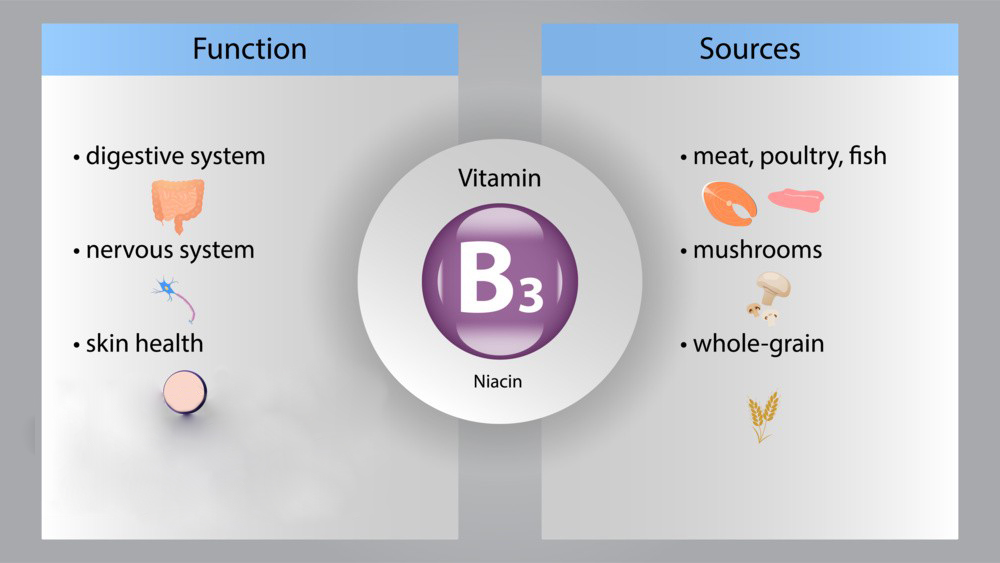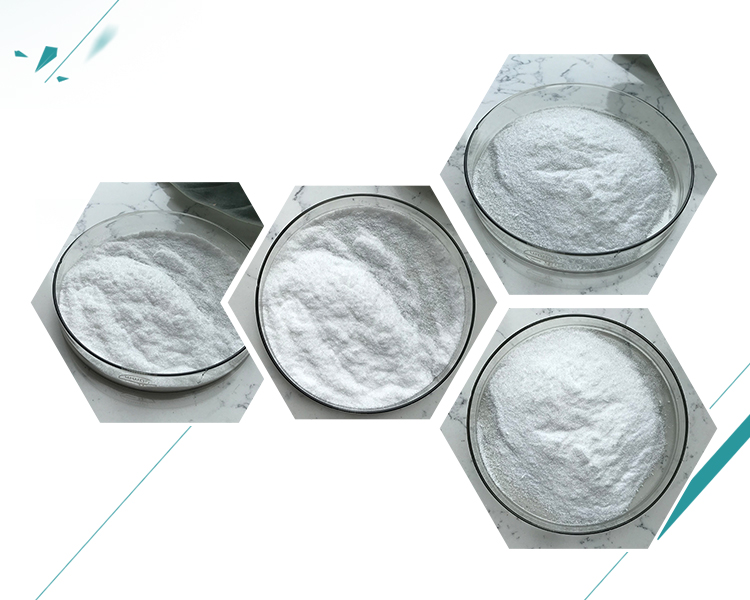Niacin, also known as vitamin B3 or nicotinic acid, is an essential nutrient involved in various metabolic processes in the body. When discussing its material and method, we typically refer to its chemical structure, dietary sources, and recommended intake.
Chemical Structure of Niacin:
- Chemical Formula: C6H5NO2
- Structure: Niacin is a water-soluble vitamin belonging to the vitamin B family. It contains a pyridine ring with a carboxyl group (COOH) at the 3-position, which is responsible for its acidic properties.
Dietary Sources:
Natural Sources: Niacin is found naturally in many foods, including:
- Meat (especially liver and poultry)
- Fish (such as tuna and salmon)
- Whole grains (like wheat and barley)
- Legumes (beans and lentils)
- Nuts and seeds
- Vegetables (like mushrooms and avocados)

Recommended Intake:
Daily Value (DV): The Recommended Dietary Allowance (RDA) for niacin varies based on age and gender:
- Adult men: 16 mg/day
- Adult women: 14 mg/day
- Pregnant women: 18 mg/day
- Breastfeeding women: 17 mg/day
Methods of Supplementation:
Supplements: Niacin is available in various forms, including:
- Nicotinic acid (immediate-release)
- Nicotinamide (also known as niacinamide)
- Extended-release formulations (to reduce flushing, a common side effect)
Functions and Benefits of Niacin:
- Metabolism: Niacin plays a crucial role in energy metabolism, helping convert carbohydrates, fats, and proteins into usable energy.
- Cellular Processes: It is involved in DNA repair, cell signaling, and the production of steroid hormones.
- Health Benefits: Adequate niacin intake supports skin health, digestive function, and nervous system integrity.

Deficiency and Toxicity:
- Deficiency: Insufficient niacin can lead to pellagra, characterized by dermatitis, diarrhea, dementia, and potentially death if untreated.
- Toxicity: High doses of niacin supplements can cause flushing (skin redness and warmth), liver toxicity, and in extreme cases, metabolic disturbances.
In summary, niacin is a vital nutrient with diverse physiological roles. Its structure, dietary sources, recommended intake levels, and supplementation methods are essential considerations for maintaining overall health and preventing deficiency-related disorders.
